PRODUCTS
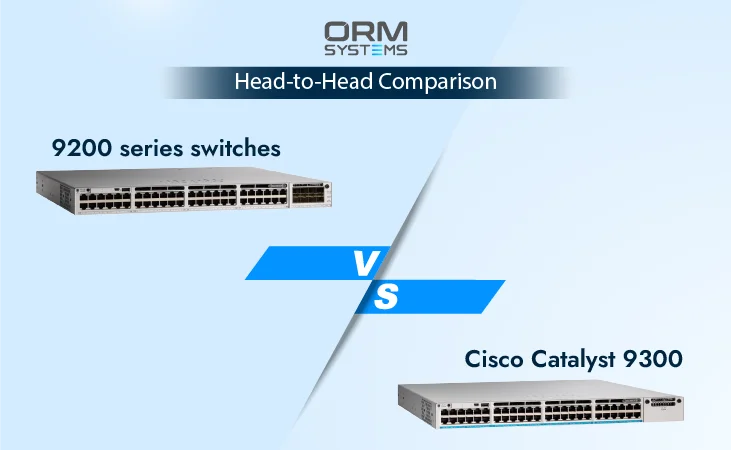 2
2In the evolving world of networking, choosing the right switch for your business is an important decision. Cisco is a leading company that offers a range of Catalyst switches for those who want a stable and fast connection. Cisco Catalyst 9300 and 9200 series switches are the most popular networking equipment in recent times. As businesses grow, the need for a robust network infrastructure is essential. This article will help you make sense of the comparisons between Cisco's Catalyst series 9200 and 9300, providing insights that can guide your decision making process.
These Cisco Catalyst series 9200 switches offer better performance and ease-of-use compared to Catalyst switch 9300. The 9200 switches are equipped with powerful automation features, which make it easier to manage and deploy the hardware, while also achieving multi-gigabit individuality.
Cisco Catalyst series switches are stackable, easy to use and configured with Cisco proprietary software. The 9200 series offers the power of multigigabit stacked without the complexity that comes with complex hardware.
Table 1. below enlists the specifications and features of Cisco Catalyst 9200 series switches.
|
Features |
Specifications |
|
High-Performance Capabilities |
- Impressive speed and throughput |
|
- Optimized for demanding network environments |
|
|
Advanced Security Features |
- Comprehensive threat detection and prevention |
|
- Robust security protocols for data protection |
|
|
Scalability and Flexibility |
- Easily adaptable to evolving business needs |
|
- Suitable for businesses of all sizes |
|
|
Hardware Specifications |
- Detailed components and architecture |
|
- Built with quality materials for durability |
|
|
Software Specifications |
- Intelligent software enhances switch functionality |
|
- Regular updates for improved performance |
|
|
Use Cases |
- Applicable across diverse industries |
|
- Commonly used in education, healthcare, and more |
|
|
Installation and Setup |
- User-friendly installation process |
|
- Step-by-step guide for easy configuration |
|
|
Performance and Reliability |
- Consistent high performance in various environments |
|
- Reliable network operation |
|
|
In-Depth Security Measures |
- Thorough analysis of security protocols |
|
- Measures for threat detection and prevention |
|
|
Software Management |
- Overview of Cisco DNA software |
|
- Regular updates and maintenance routines |
|
|
Customer Reviews |
- Real-world experiences shared by users |
|
- Honest feedback on pros and cons |
|
|
Comparison with Other Switch Series |
- Contrasting features with similar products |
|
- Advantages of choosing Cisco Catalyst 9200 Series |
|
|
Future Developments |
- Upcoming features or updates |
|
- Cisco's commitment to innovation |
|
|
Troubleshooting Tips |
- Common issues and their solutions |
|
- Access to robust support resources by Cisco |
|
|
Cost Analysis |
- Transparent pricing structure |
|
- Consideration of total cost of ownership |
Networking branch office devices are best suited for the Cisco Catalyst 9200 series switch. Stated differently, the 9200 series is an excellent choice for tying an office into a wide area network. Switches and routers from the Cisco Catalyst 9200 switch series provide wireless connectivity with more than enough bandwidth for an entire office.
That's actually the hardware's strongest point. Cisco Catalyst 9200 series switches are more than capable of providing adequate service to any small to medium-sized enterprise location. It's the ideal solution for connecting an office that can accommodate thousands of devices without experiencing any throughput issues, thanks to its strong design, simple administration, and fast speeds.
The Cisco Catalyst 9300 series switch is designed to provide high-performance access and distribution for campus and branch networks. With top-notch bandwidth capabilities, a wide range of connection options, and extensive control features, 9300 hardware has everything network engineers need to build powerful and robust enterprise networking systems. Its advanced features and capabilities allow businesses to optimize network performance, improve security, and automate operations.
Taking a step further, the Catalyst 9300 series introduces advanced capabilities such as stacking, modular uplinks, and support for higher bandwidth. Designed for larger enterprises with complex networking needs, this series ensures scalability and future-readiness.
Table 2. below shows the key features and specifications of Cisco Catalyst 9300 series switches.
|
Key Features |
Specifications |
|
Advanced Security Features |
- Trustworthy threat detection and prevention |
|
- Secure, encrypted communications; |
|
|
- Identity-based access control |
|
|
High-Performance Capabilities |
- Multi-gigabit technology for faster speeds |
|
- Optimized for high-density environments |
|
|
Scalability and Flexibility |
- Modular design for easy scalability |
|
- Adaptable to evolving network needs |
|
|
Intelligent Network Management |
- Cisco DNA software for automation and insights |
|
- Network analytics for proactive monitoring |
|
|
Enhanced Reliability and Redundancy |
- Built-in redundancy for uninterrupted service |
|
- Hot-swappable power supplies and fans |
|
|
Seamless Integration with Other Solutions |
- Integration with Cisco's ecosystem of products |
|
- Compatible with various network protocols |
|
|
Easy Installation and Configuration |
- User-friendly setup with intuitive interfaces |
|
- Simplified configuration for quick deployment |
|
|
Energy-Efficient Operation |
- Energy-efficient hardware design |
|
|
- Power-saving features for sustainability |
Since the topic is about Cisco 9200 vs 9300 switches, they can manage cloud servers with thousands of users, they are built for all large jobs. Of course, switches with this much raw bandwidth can handle workloads typical of a data center. Because the Cisco Catalyst 9300 series stackable switches are scalable, the system's backbone can easily grow to accommodate the IoT network as it expands.
Switches from the Cisco Catalyst 9300 and 9200 series provide reliable solutions for a range of networking requirements. A number of variables, including network size, scalability needs, and financial constraints, will determine which option is best. Below are tables that compare bot of these Catalyst switches:
Catalyst 9300: Offers 24 or 48 Gigabit Ethernet ports, providing flexibility for various network sizes and requirements.
Catalyst 9200: Available with 8, 24, or 48 Gigabit Ethernet ports, suitable for smaller to mid-sized networks.
Both series provide a variety of uplink options, including 1G, 10G, 25G, 40G, and 100G, ensuring scalability and future-proofing for evolving network demands.
Catalyst 9300: Supports both fixed and modular power supply options, allowing organizations to choose the best fit for their power redundancy and scalability needs.
Catalyst 9200: Offers fixed power supplies, suitable for environments where modular power is not a critical requirement.
Catalyst 9300: Features StackWise-480 technology, providing a higher stacking bandwidth for improved performance in larger, more complex networks.
Catalyst 9200: Utilizes StackWise-160 technology, offering stacking capabilities suitable for smaller to medium-sized deployments.
Both series share a 1RU form factor, ensuring efficient use of rack space in data center environments.
Both series support PoE+ and UPOE, facilitating the deployment of powered devices such as IP cameras, phones, and access points without the need for additional power sources.
Catalyst 9300 and 9200 series offer flexibility in software selection with options such as LAN Base, IP Base, and IP Services. The choice depends on the desired feature set and capabilities required for the network.
In the evolving world of technology and networking, it is crucial to find the right network switch that can make a difference with its performance and efficiency. The Cisco Catalyst 9300 and 9200 switches are popular network models compared to their capabilities.
Table 3. shows the performance comparison between the Cisco Catalyst 9300 and 9200 Series Switches below:
|
Performance Metric |
Catalyst 9300 Series |
Catalyst 9200 Series |
|
Throughput |
High, supporting Gigabit and Multigigabit Ethernet |
Reliable, supporting Gigabit Ethernet |
|
Switching Capacity |
Varies by model, up to 720 Gbps |
Varies by model, up to 176 Gbps |
|
Forwarding Rate |
Up to 432 Mpps |
Up to 130 Mpps |
|
Packet Buffer Memory |
Up to 16 GB per switch |
Up to 8 GB per switch |
|
Number of Ports |
Varies by model, up to 48 ports |
Varies by model, up to 48 ports |
|
Stacking Capability |
Yes, supports StackWise technology for stacking up to 8 switches |
Yes, supports StackWise technology for stacking up to 8 switches |
|
Power over Ethernet (PoE) |
Available on select models |
Available on select models |
|
Quality of Service (QoS) |
Advanced QoS capabilities for prioritizing and managing traffic |
Basic QoS capabilities |
|
Latency |
Low latency for real-time applications |
Low latency for general applications |
Another crucial consideration is the management and automation capabilities. Both switches support SNMP, Syslog, and NetFlow in terms of network management interfaces and protocols. REST APIs, YANG data models, and NETCONF are just a few of the additional management interface options available on the Catalyst 9300 series switches. This increases the flexibility and control that network administrators have over their systems.
Table 4. enlists the Management and Automation features of Cisco Catalyst 9300 Series Switches.
|
Management and Automation Features |
Description |
|
Cisco DNA Center Integration |
Seamlessly integrates with Cisco DNA Center for centralized management, automation, and analytics, streamlining network operations. |
|
Web-based Management Interface |
User-friendly web interface for easy configuration and monitoring, suitable for both novice and experienced users. |
|
Command Line Interface (CLI) |
Offers a powerful CLI for advanced configuration and troubleshooting, providing flexibility for skilled administrators. |
|
RESTful API Support |
Allows for programmability and automation by supporting RESTful APIs, enabling integration with third-party tools and custom applications. |
|
Smart Licensing |
Simplifies licensing management by providing a flexible and automated way to handle licenses across the network. |
|
Zero-Touch Provisioning (ZTP) |
Facilitates quick and automated deployment of switches, reducing manual configuration efforts and minimizing errors. |
|
Embedded Event Manager (EEM) |
It enables the automation of tasks based on predefined events, enhancing the switch's ability to respond to specific conditions autonomously. |
|
Telemetry and Analytics |
Provides real-time telemetry data for proactive monitoring and analytics, allowing administrators to make informed decisions. |
|
Role-Based Access Control (RBAC) |
Enhances security by allowing administrators to define roles and permissions, ensuring access control based on job responsibilities. |
|
Software Updates and Patching |
Supports automated software updates, ensuring that the switches remain current with the latest features and security patches. |
|
Integration with Third-Party Tools |
Allows integration with various third-party tools and platforms, fostering interoperability and extending the switch's capabilities. |
High accessibility and redundancy are the paramount features that ensures the reliability and continuous operation of network infrastructures in both Cisco Catalyst 9300 and 9200 series switches. The Cisco Catalyst 9300 switch supports dual supervisors for added redundancy. In comparison, the Cisco 9200 supports redundant supervisors
Below are separate tables 5 and 6 for the Higher Accessibility and Redundancy features of the Cisco Catalyst 9300 Series and Cisco Catalyst 9200 Series Switches:
Table 5. High accessibility and redundancy features of Cisco Catalyst 9300 series switches.
|
Feature |
Description |
|
StackWise Virtual Technology |
Enables the creation of a single, logical switch entity from multiple physical switches, enhancing scalability and resilience. |
|
Hot Standby and Stateful Switchover |
Facilitates seamless failover between stack members, ensuring uninterrupted operation in case of hardware or software issues. |
|
Redundant Power Supply Options |
Dual, hot-swappable power supply units provide redundancy, minimizing the risk of power-related disruptions and enhancing system reliability. |
|
StackPower Technology |
Allows power sharing among stack members, optimizing power distribution and ensuring continuous operation even if one power supply fails. |
|
Redundant Fans for Cooling |
Dual, redundant fans prevent overheating by providing backup cooling, contributing to the overall reliability and longevity of the switch. |
|
Built-in Hardware Redundancy |
Multiple physical components are designed redundantly within the switch, reducing the likelihood of a single point of failure and enhancing overall system reliability. |
|
Graceful Insertion and Removal (GIR) |
Simplifies the process of adding or removing switches from the stack, ensuring minimal disruption and preserving network continuity during maintenance or upgrades. |
Table 6. High accessibility and redundancy features of Cisco Catalyst 9200 series switches.
|
Feature |
Description |
|
Modular Design for Flexibility |
Allows for easy expansion and replacement of modules, providing flexibility and minimizing downtime during upgrades. |
|
Power Supply Redundancy Options |
Offers multiple power supply options with built-in redundancy, ensuring continuous power availability and reducing the risk of disruptions. |
|
Dual-Fan Modules for Cooling |
Dual-fan modules provide redundant cooling, preventing overheating and contributing to the overall stability and longevity of the switch. |
|
Stackability for Enhanced Scalability |
Supports stacking for increased scalability, enabling the creation of a unified, high-performance network entity. |
|
Advanced System Monitoring |
Constantly monitors system health and performance, allowing for proactive identification and resolution of potential issues before they impact network operation. |
|
Flexible Software Upgrades |
It permits software upgrades without affecting network availability, ensuring that the switch can adapt to evolving requirements without causing disruptions. |
Want to buy this series of products? please contact:
The specific needs of your organization and the budget you have to work with will determine which switch series you choose. Catalyst's 9300 series switches are ideal for large organizations with complex networking needs. They offer scalability and advanced security, as well as intent-based networking. The Catalyst Series 9200 is a reliable solution for small businesses that offers simplified management and reliable performance.
In the end, your decision should be based on your organization's objectives, size, and complexity of your network infrastructure. Cisco's commitment towards innovation ensures both series will deliver robust, high-performance, secure networking solutions.
Related Topics:
Cisco Nexus Vs Catalyst Switches: what’s the difference?
Migration Guide: Cisco Catalyst 2960-X Series to 9200 Series
Why Upgrade to the Cisco Catalyst 9200 Series Switches?
Q: Can the Catalyst 9300 series be used in a smaller business setup, or is it more suitable for large enterprises?
The Catalyst 9300 series is versatile and can be adapted for smaller businesses. The decision depends on the specific requirements and growth plans of the organization.
Q: What are the power consumption differences between the 9200 and 9300 series?
Power consumption varies based on the specific models within each series. Refer to Cisco's documentation for detailed specifications on power requirements for individual switches.
Q: Are there any notable differences in the user interface and management capabilities between the two series?
While both series share Cisco's intuitive interface, there might be nuanced differences in management features. Explore the specifics in the documentation to determine which aligns better with your preferences.
Q: Can I mix Catalyst 9200 and 9300 switches in the same network seamlessly?
While Cisco aims for compatibility across its products, it's advisable to maintain uniformity within your network setup for optimal performance and ease of management.
Q: How frequently do firmware updates occur, and is there a significant difference in update frequency between the two series?
Firmware update schedules can vary, and it's essential to stay informed about the latest releases. Both series receive regular updates, but the frequency may differ based on the evolving technology and security needs.
Recent Posts
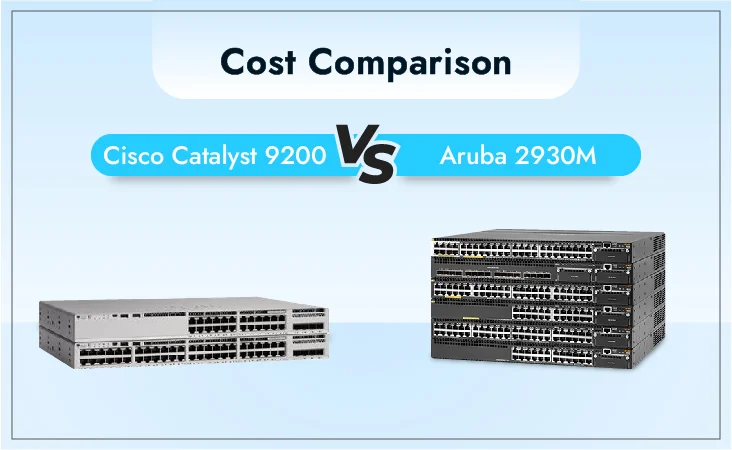
Cisco Catalyst 9200 Switches vs Aruba 2930M Switches: Comparing Prices
30 April-2024
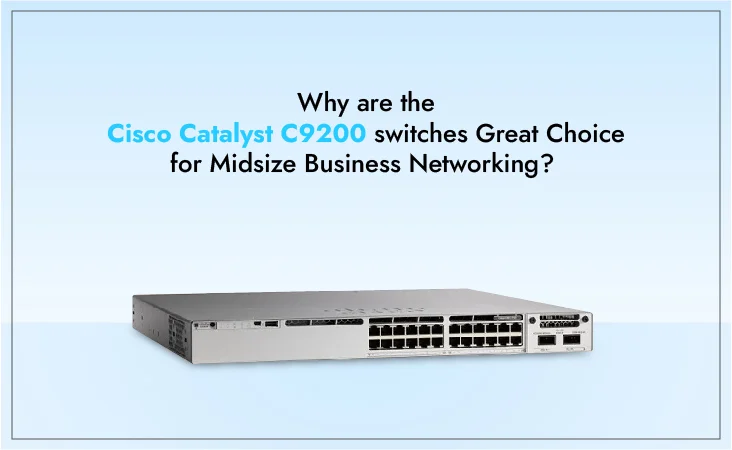
What Makes the Cisco Catalyst C9200-24P-A Switch Ideal for Medium-Sized Businesses?
30 April-2024
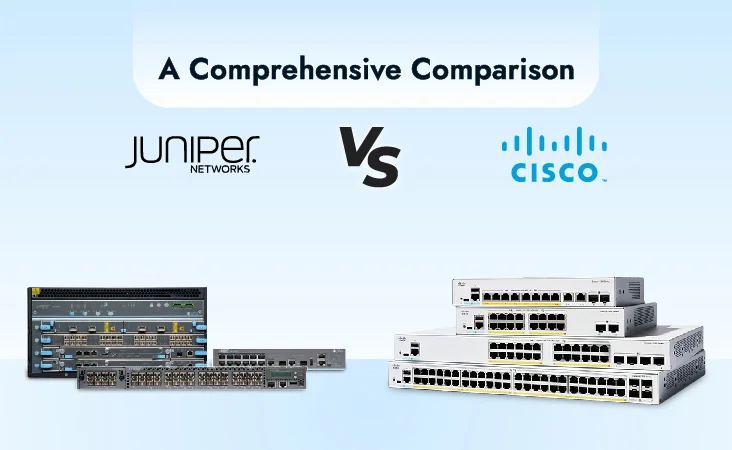
Cisco vs Juniper: A Comprehensive Comparison
26 April-2024

Cisco vs Juniper: A Comprehensive Network Comparison
26 April-2024
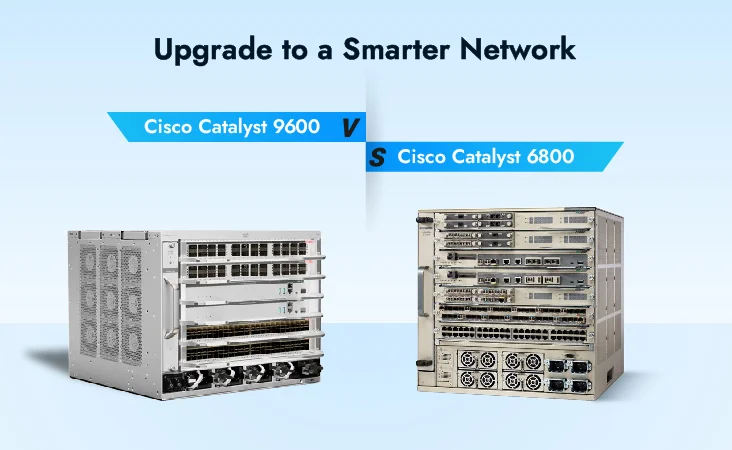
Cisco Catalyst 9600 vs Cisco Catalyst 6800 Series Switches: Upgrade to a Smarter Network
25 April-2024
Most Used Tags
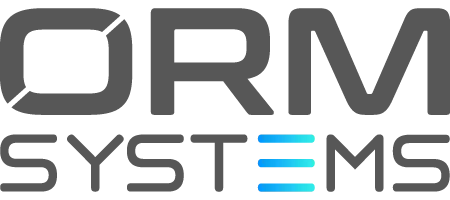
Developing performance-driven networks to boost the efficiency of your business

Thank you for your interest in ORM systems, our experts will connect with you shortly.
 +1 (281)
747-5957
+1 (281)
747-5957


